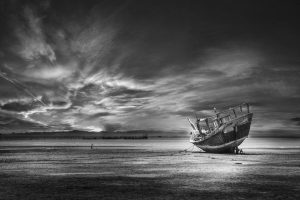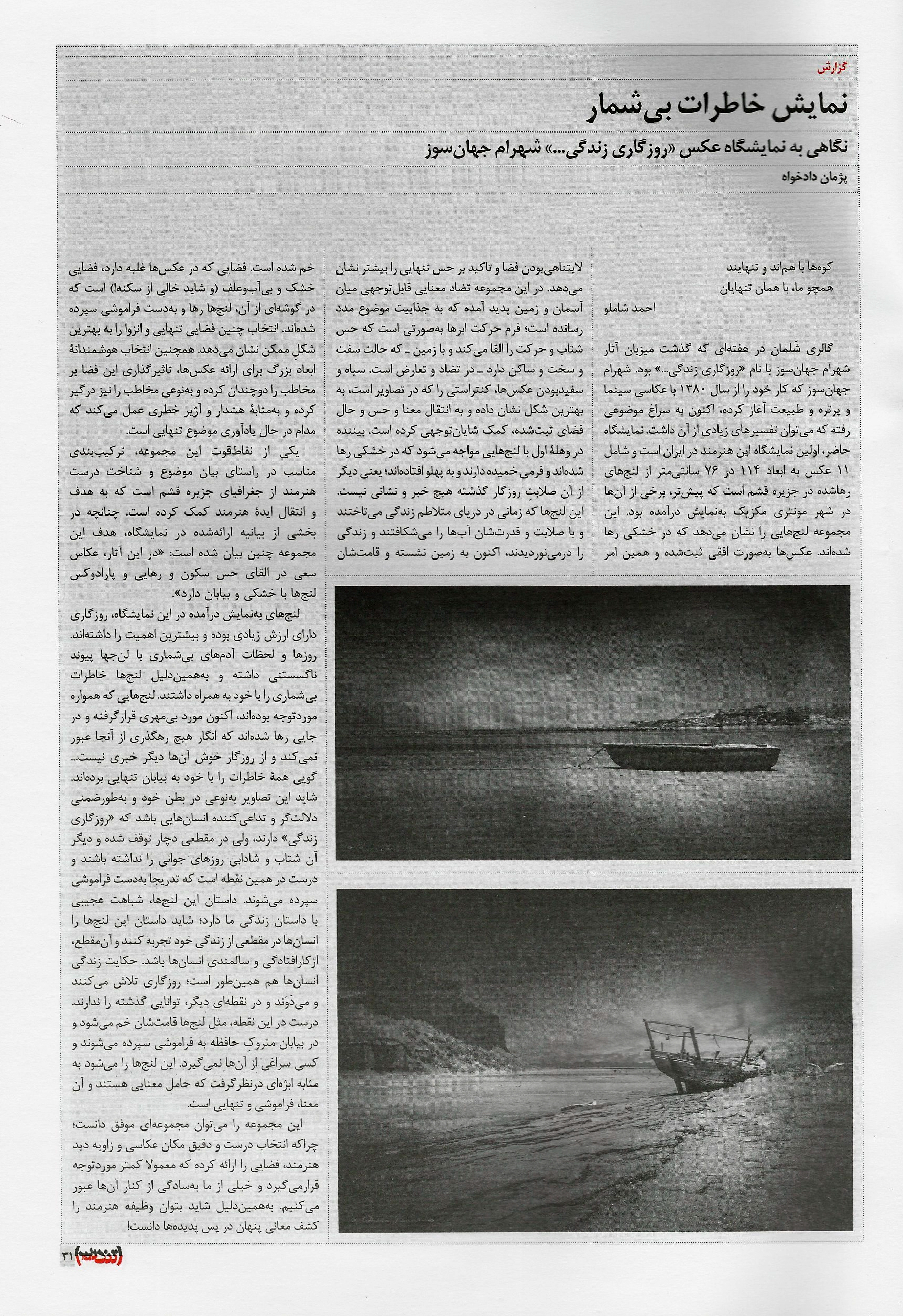Last week, the Shalman gallery hosted an exhibition titled “Once Upon a Time, life…” of artworks of Shahram Jahansooz. Shahram Jahansooz, who started his career in 2001 with cinematography, portrait and nature photography, has now chosen a topic that can be interpreted in many ways. This is his first gallery in Iran and includes 11 pictures sized 114 by 76 centimetres of abandoned launches in the island of, some of which had been on exhibition in Monterrey in Mexico before. This collection shows launches which have been abandoned on land. The pictures have been taken horizontally and this emphasizes the never-ending feeling of the expanse and the sense of loneliness. There is a significant semantic contradiction between the sky and the earth which helps the allure of the collection. The way the clouds are shown to move is in a way the gives a sense of motion and movement and is the complete opposite of the earth – shown to be rigid and hard. The pictures are in black and white which helps convey the meaning and sense of the contrasts in them. The audience first sees the curved launches that have been abandoned on land, leaning on one side; no longer showing any signs of the might they once had. The launches that once rode the rough seas, cutting through the high waves with their might, moving through life itself, are now grounded and their bodies bowed. The setting of the photograph is in dry and barren land (and perhaps without any form of life!), at the corner of which a launch is abandoned and forgotten. This setting shows loneliness and isolation in the best way possible. The smart choice of using large image sizes has doubled the effects of the setting and in a way engages the audience, acting as a warning and alarm that is constantly reminding them of loneliness.

One of the fortes of this collection is the proper use of composition in order to express the theme and the accurate knowledge of the artist of the landscape of the island of Qeshm, which has helped him convey his thoughts and ideas. In the statement given in the exhibition, the purpose of the collection is also given as follows: “In this collection, the photographer has attempted to convey the sense of motionlessness and abandonment and the paradox of the launches with the arid land.”
The launches on show in this exhibition were once very valuable and priceless. The lives of countless people were tied to these launches and therefore they carried countless memories with them. Launches that had always been the focus of attention are now indifferently abandoned in a place where no one ventures and their once happy lives are nowhere to be seen. It’s as if they have taken all of their memories to the deserts of solitude. Perhaps the meaning and sense behind these pictures represent and symbolize humans that once upon a time had a life, but at some point came to a halt and no longer have the drive and youthfulness of their early days and it is at exactly this point where they are slowly forgotten. The story of these launches is strangely familiar to our lives; people might experience the same thing at some point in their lives, and that point is when they are old and disabled. The life story of humans is the same, at some point they work and try their best and at another, they no longer have the strength they used to. At this point, their figure bends, just as the launches bowed, and they are abandoned in the forsaken desert of memories and no one seeks them out. These launches can be considered as objects that carry a meaning, and that meaning is abandonment and loneliness.

The collection can be considered to be very successful; because the correct and proper setting of the photography and the view of the artist has created a setting that has not been looked at a lot and many of us would easily ignore and walk pass by. Therefore the role of the artist can be considered as the ability to discover the hidden meaning behind what is normally seen.








